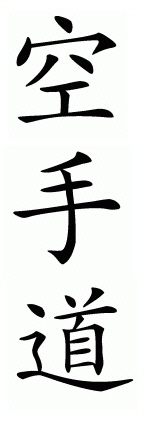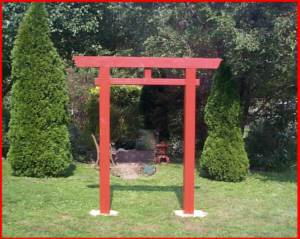Preserving the Art's Integrity
To understand the reasons why Fujita decided to consign his hereditary, family Ninjutsu system to the list of extinct Japanese martial arts from the pre-modern period, while passing on his other systems, requires reflection upon the nature of Ninjutsu in Japanese history. Unlike the samurai arts that had evolved with Japan through the long peace of the Tokugawa Shogunate, and further still after the Meiji modernization, Ninjutsu had always been an underground and illegal subculture that remained beyond the scope of impact by government decrees. The martial arts historian Donn F. Draeger in his book, Classical Budo: The Martial Arts and Ways of Japan, Vol. II. reminds us that Ninjutsu had developed among an oppressed class of people that depended upon secrecy for survival. He writes "below the rank of the commoner were the so called hinin 'nonhumans'" (Draeger, 19). Draeger then goes on to mention that the ninja often came from this shunned class, the hinin, and thus, Ninjutsu had always thrived for the very reason that it was a close knit system that was completely hidden from anyone outside its immediate family circle.
It had been historical practice, at least since the long peace of the Tokugawa Shogunate, for the last inheritor of a Ninjutsu system to destroy all of the records and secrets of a system if no worthy inheritor was found. This practice became the common resort of Ninjutsu inheritors, as the stability of the new era relegated their arcane skills to irrelevance, and compelled Ninjutsu practitioners to pursue peacetime vocations to support their families. This practice eventually led to the near extinction of the art, which before the openness of the 20th century, was considered to be a fact. Additionally, it had always been acceptable to destroy a system to prevent it falling into disrepute, and there is evidence to suggest that this is exactly the way Fujita perceived the situation, as it existed at the time that he was training both Inoue and Iwata.
In post World War II Japan, such a set of circumstances existed. The old rules no longer applied and the old schools of the samurai had evolved into classical, and then modern Budo, and were being taught to the American occupiers, whom Fujita had fought during the war, and whom he had feared would ban the martial arts as a means of destroying Japanese culture. Fujita was further troubled by the fact that other Japanese martial artists, such as Hatsumi Yoshiaki (who later changed his name to Masaaki), and Hatsumi's teacher, Takamatsu Toshitsugu, were revealing the sacred teachings of Ninjutsu to public scrutiny. An example of this public exposure was the 1967 release of Black Belt Magazine's second and third issues to the western martial arts community. The two releases contained articles featuring Hatsumi Yoshiaki demonstrating various Ninjutsu techniques, a clear departure from the days when even speaking the art's name was taboo.
In Japan, ninja mania was far more advanced. As early as October 1957, the English martial artist Richard Bowen had written an article for the publication Budokwai Quarterly Judo, which catalogued various misdeeds that were committed by individuals who were taking their interpretation of Ninjutsu beyond the bounds of legality. A measure of Fujita's displeasure with this state of affairs is evident in an interview he gave just two years before he died.
In an interview with a journalist for the Tokyo based Sankei Shimbun (which was documented by Stephen Turnbull in his book, Ninja: The True Story of Japan's Warrior Cult), Fujita then 65 years old, recounted his training with his grandfather, and the various rigors of his regimen: "I ate sulfuric acid, rat poison, lizards, 879 glasses, and 30 bricks." The article then goes on to say that "Fujita claims he is the last ninja and the secrets of the art will die with [him]." The article then exposed the central reason for this decision, that Fujita "deplores the current commercialization of the ninja in Japan" (Turnbull, 144). While we take it for granted today, the public exposure and commercialization of the art was a dramatic departure from the traditions of the art.
The exposure of the art to persons other than members of the immediate clan or family was strictly proscribed, and akin to committing religious sacrilege in medieval times. Here, then, is the most probable reason why Fujita, who had worked all his life to perfect his skills and preserve the arts of his ancestors, decided to relegate Koga Ryu Wada Ha to extinction. The evidence suggests that he believed that to not do so was a far greater affront to his family tradition, than allowing it to die.
Fujita, it seems, was a man living outside of his time. He was unable to reconcile himself to the fact that the world had changed so utterly and that his treasured Ninjutsu was openly being manipulated for commercial and entertainment purposes. This appears to be the most likely reason that Fujita decided to overlook his students and martial arts colleagues as potential inheritors of the Koga Ryu Wada Ha, and instead decided to consign this last remaining system of Koga Ninjutsu system to history.
Fujita's behavior relating to his Koga Ryu Wada Ha, while difficult to understand from the perspective of a world in which Ninjutsu is no longer a carefully guarded and mysterious secret, was nonetheless the historical norm. Hatsumi's openness, which has led to the preservation of the art in the guise of the Bujinkan, is the traditional exception.
All of Fujita's behavior, from belatedly informing Iwata that he was the 14th inheritor of the Koga Ryu Wada Ha, to his selection of the title Doronron: Saigo No Ninja, (The Last Ninja), combined with his interviews with Watatani in 1963 and the Sankei Shimbun in 1964, paint a picture of a man who saw Ninjutsu through traditional eyes. The evidence can only be interpreted to mean that it had been Fujita's long held intention to be the last ninja of Koga Ryu Wada Ha. Fujita's clear train of behavior is put beyond doubt, when we recall his own words to the Sankei Shimbun, which in reference to the Koga Ryu Wada Ha, Fujita said that the art "will die with me" (Turnbull, 144). When, on the 4th January 1966, Fujita and three of his students were killed in an automobile accident, all the evidence suggests that at that moment, his 1959 book title became prophetic.
The martial arts writer and researcher, Andrew Adams, who published his famous book, Ninja: The Invisible Assassins, in 1970, helps to validate this fact. Adams states that at the time, "Hatsumi has been honored by being the only ninja listed in Japan's official 'Martial Arts Directory'" (Adams, 173). This statement was made ten years before the American ninja boom and therefore cannot be dismissed as being designed to benefit by being the sole source of the art, as would later be claimed when the western Ninjutsu pioneer, Stephen K. Hayes, made the same statement. Indeed, this statement by Adams, who was not a practitioner of Ninjutsu, but an impartial researcher, allows for an unbiased reflection upon the facts as they existed in 1970.
The last word on this matter, however, should be a reflection on the opinion of the acknowledged authority on such matters, and in the 1978 revised version of the Bugei Ryuha Daijiten, Watatani puts the matter to rest. Speaking of the Koga Ryu Wada Ha, he writes, "also, nobody knows this ryuha today, I think he never taught it" (Watatani, 273).
As usual with Fujita, his actions are as strong and compelling as his words, for shortly before his death, he donated all of his Ninjutsu-related belongings to the Ninja Museum at Iga-Ueno, a fact that is attested to by Stephen Turnbull. He also mentions the Ninja Museum, saying that "among other things it has the archive of books, clothing and weapons belonging to the 'last Ninja,' Fujita Seiko" (Turnbull, 148). This last action on the part of Fujita is completely antithetical to the idea that he designated an inheritor to his Koga Ryu Wada Ha. This would be an unprecedented act in Japanese martial tradition. The inheritor of a system would invariably receive any such items, as a way to demonstrate an unbroken line of transmission from one generation to the next.
This last action, as much as any of Fujita's words, signifies his breaking of the master-student connection that has always been the medium of transmission of traditional Japanese martial knowledge. It stands as tangible evidence to accompany Fujita's spoken intentions. In the absence of clear documentary evidence of transmission from Fujita to one of his students, the combination of his words and actions is unquestionable. Anyone claiming inheritance of the Koga Ryu Wada Ha, in the absence of historically verifiable documentation, must reconcile themselves to the fact that their connection to the Koga Ryu Wada Ha, is in the best light, purely inspirational, and certainly not factual. In the end, it seems, that Fujita was, as he intended, the last ninja of the Koga Ryu Wada Ha. The evidence on this point is undisputed. |







